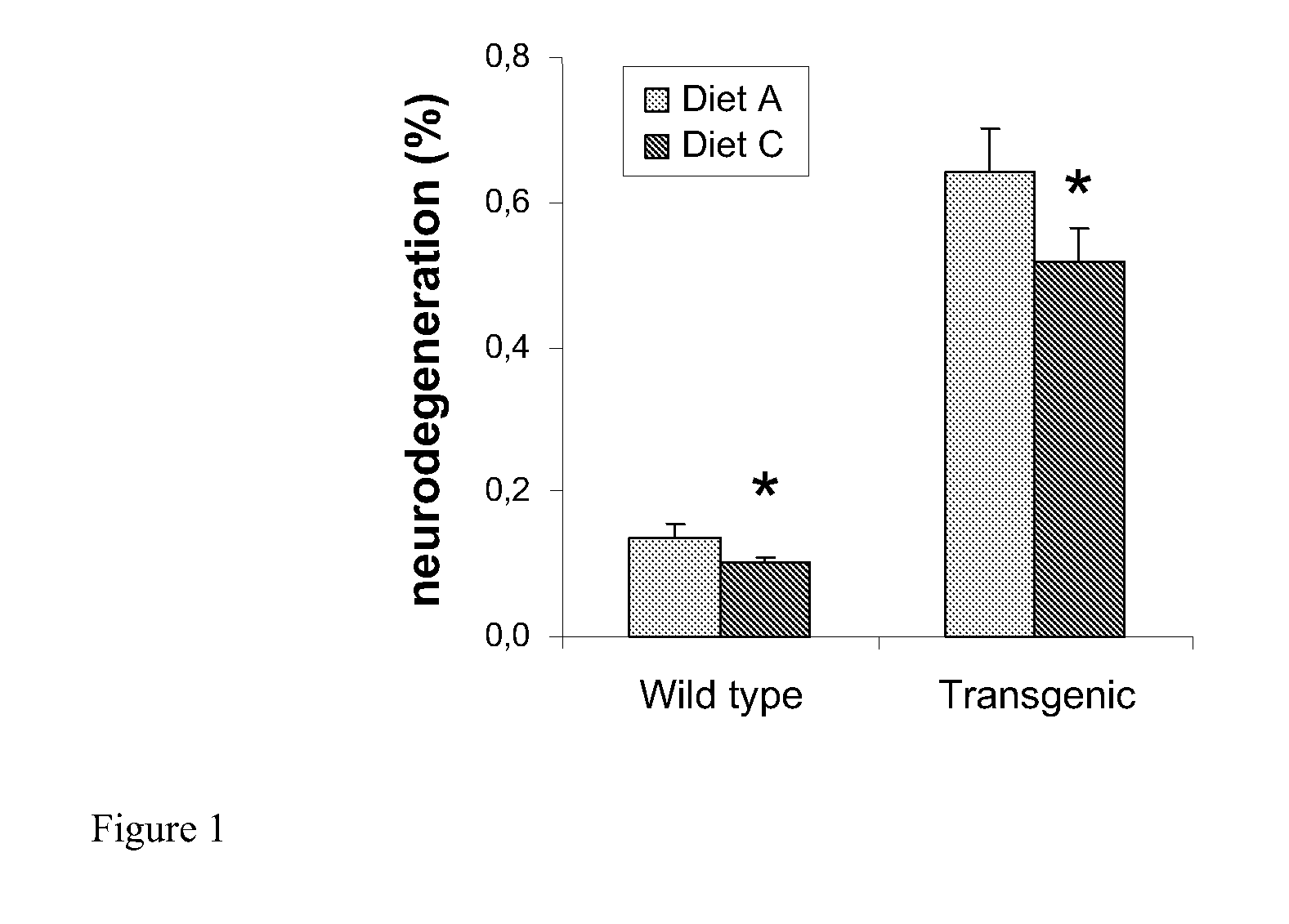Food composition for prodromal dementia patients
a prodromal dementia and food composition technology, applied in the field of food composition for prodromal dementia patients, can solve the problems of reducing the development of more severe problems, reducing or delay the incidence of dementia,
- Summary
- Abstract
- Description
- Claims
- Application Information
AI Technical Summary
Benefits of technology
Problems solved by technology
Method used
Image
Examples
example 1
Capsule for a Patient Diagnosed as a Prodromal Dementia Patient
[0064]Coating of a slowly dissolvable polymeric material surrounding a liquid phase, wherein the liquid is 1.1 g and comprises:
0.8 g of a lipid blend of vegetable oil and marine oil giving as fatty acid profile:[0065]Saturated fatty acids 34 g[0066]Oleic acid 15 g[0067]Eicosapentaenoic acid 7 g[0068]Docosahexaenoic acid 27 g[0069]Linoleic acid 2.6 g[0070]Alpha-linolenic acid 0.6 g[0071]Other fatty acids make up to 100 g fatty acids
200 mg uridine monophosphate
50 mg choline
50 mg other components (including folic acid, vitamin B12, vitamin B6, minerals, trace elements).
example 2
Gel for Forting a Second Dish
[0072]The gel contains a lipid fraction, a nucleotide fraction, a methyl donor and a mineral fraction in an amount of
per 10 g:[0073]100 mg DHA[0074]100 mg UMP[0075]50 mg choline[0076]40 μg folic acid[0077]50 mg magnesium aspartate.
[0078]The gel can be added to a soup or meat sauce to fortify a warm dish. The support of the daily activities in the life of an elderly susceptible of developing dementia can be determined by measuring the ease of applying these activities after administration of the product for a period of preferably at least 2 weeks.
example 3
Supplement with Package
[0079]Packaged composition comprising per 125 ml:
Energy 125 kcal; Protein 3.9 g; Carbohydrate 16.5 g; Fat 4.9 g.
Fat includes 1.5 g DHA+EPA, and 106 mg phospholipids (soy lecithin); Choline 400 mg; UMP (uridine monophosphate) 625 mg; Vitamin E 40 mg α-TE; Vitamin C 80 mg; Selenium 60 μg; Vitamin B12 3 μg; Vitamin B6 1 mg; Folic acid 400 μg.
Minerals and trace elements: Sodium 125 mg; Potassium 187.5 mg; Chloride 156.3 mg; Calcium 100 mg; Phosphorus 87.5 mg; Magnesium 25 mg; Iron 2 mg; Zinc 1.5 mg; Copper 225 μg; Manganese 0.41 mg; Molybdenum 12.5 μg; Chromium 8.4 μg; Iodine 16.3 μg. Vitamins: Vit. A 200 μg-RE; vit. D3 0.9 μg; vit. K 6.6 μg; Thiamin (B1) 0.19 mg; Riboflavin (B2) 0.2 mg; Niacin (B3) 2.25 mg-NE; Pantothenic acid (B5) 0.66 mg; Biotin 5 μg.
[0080]The package indicates that the composition improves the activities of daily living. The composition is suitable for administration to prodromal dementia patients, prodromal Alzheimer patients and elderly as d...
PUM
| Property | Measurement | Unit |
|---|---|---|
| weight ratio | aaaaa | aaaaa |
| weight ratio | aaaaa | aaaaa |
| weight ratio | aaaaa | aaaaa |
Abstract
Description
Claims
Application Information
 Login to View More
Login to View More - R&D
- Intellectual Property
- Life Sciences
- Materials
- Tech Scout
- Unparalleled Data Quality
- Higher Quality Content
- 60% Fewer Hallucinations
Browse by: Latest US Patents, China's latest patents, Technical Efficacy Thesaurus, Application Domain, Technology Topic, Popular Technical Reports.
© 2025 PatSnap. All rights reserved.Legal|Privacy policy|Modern Slavery Act Transparency Statement|Sitemap|About US| Contact US: help@patsnap.com

